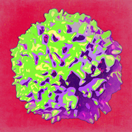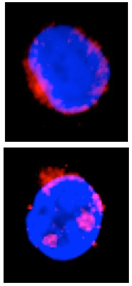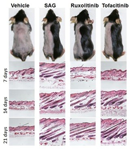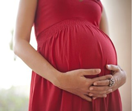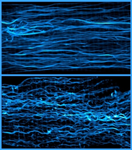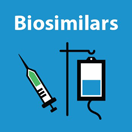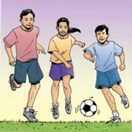Spotlight
Letter from Dr. Stephen I. Katz: Communicating NIH Support and Impact
Dear Colleagues,
Did you know that 95 percent of the National Institutes of Health (NIH) budget goes directly to research awards, programs, and centers; training programs; and research and development contracts? NIH-supported research leads to tens of thousands of new scientific findings every year. At NIAMS, we are proud to be funding exceptional science on bone, muscle, joint and skin diseases, and we ask for your support to help us spread the word about these exciting projects.
Image: Stephen I. Katz, M.D., Ph.D.
News
Rapid-Response Immune Cells Are Fully Prepared Before Invasion Strikes (Includes Video)
Through the use of powerful genomic techniques, researchers at the NIAMS have found that the development of immune cells, called innate lymphoid cells (ILCs), gradually prepares these cells for rapid response to infection. This work, which appeared online in Cell, sheds light on the development and function of a cell type that is increasingly recognized as having an important role in the body’s immune defense.
Image: Researchers at the NIAMS have discovered that innate lymphoid cells, early responders of the immune system, are primed at the DNA level for rapid action. Photo credit: Han-Yu Shih, Ph.D. and John O’Shea, M.D., NIAMS, and Alan Hoofring, NIH Division of Medical Arts.
Same Immune Regulatory Protein Found to Play Instrumental Role in Two Hereditary Autoinflammatory Diseases: Findings Suggest New Ways to Treat These Diseases and Other, Similar Conditions
Research funded in part by the NIAMS has revealed a new role for A20, a protein that regulates a key immune response pathway, in certain early-onset autoinflammatory diseases. The results suggest that targeting this pathway could be an effective strategy for treating these diseases, and possibly related conditions as well.
Image: NF-kB (red) remains largely outside of the nucleus (blue) in a white blood cell from a healthy individual [upper panel], but in a patient with a NEMO mutation, NF-kB translocates to the nucleus, where it functions as a gene activator [lower panel]. Photo credit: Eric P. Hanson, M.D., NIAMS.
Bone Loss Triggered by Hormonal Condition Found to Involve Immune Molecule: Repurposed Medicines May Prove Effective in Preserving Patients’ Bone Mass
Through a combination of observations in people and experiments in mice, researchers funded in part by the NIAMS have uncovered the molecular underpinnings of bone loss associated with a condition in which too much parathyroid hormone (PTH) is produced. The findings, which appeared in the journal Cell Metabolism, suggest that treating patients with existing drugs may help prevent bone loss, sidestepping the need for surgery.
Two Drugs That Treat Rheumatoid Arthritis and Blood Cancers Shown to Promote Hair Growth
Two drugs—one used to treat rheumatoid arthritis and another for different types of blood cancers—have shown promise in reversing hair loss characteristic of alopecia areata and related disorders, according to a study in mice funded in part by the NIAMS.
Image: Shaved mice in the resting stage of the hair cycle were either left untreated or treated daily with topical drugs to stimulate hair growth. Photo credit: Angela Christiano, Ph.D., Columbia University.
Study Suggests Most Women With Mild to Moderate Lupus Can Expect to Have Healthy Pregnancies
A large, long-term study among women with lupus has yielded important insights into how to predict who may develop pregnancy complications associated with the disease, and who is most likely to have a healthy pregnancy. A related study identified key factors that may put a woman at risk for problems, allowing for early detection and monitoring. The studies were funded in part by the NIAMS.
Image: Women with mild to moderate lupus can expect to have a healthy pregnancy, provided certain risk factors are absent.
Publication Highlights Release of Muscular Dystrophy Action Plan: Plan Provides Strategies and Opportunities for Muscular Dystrophy Research
The Muscular Dystrophy Coordinating Committee recently released an updated version of its Action Plan for the Muscular Dystrophies. The plan is a comprehensive guide for addressing critical challenges facing people living with muscular dystrophy.
Periodontitis: A Microbial-Driven Inflammatory Disease
A research team led by Niki Moutsopoulos, D.D.S., Ph.D., in the Division of Intramural Research at the National Institute of Dental and Craniofacial Research (NIDCR) is studying how immune defects may be associated with susceptibility to periodontal disease and what factors contribute to bone loss associated with bacterial overload.
Two Mind and Body Practices for Chronic Low-Back Pain Better Than Usual Care Alone
A research study involving adults with chronic low-back pain showed they had more improvement in pain and functional limitation using mind and body practices—specifically mindfulness-based stress reduction and cognitive-behavioral therapy—than they did with usual care.
NIH Director’s Blog
A Look Inside a Beating Heart Cell
An advanced form of high-resolution, high-speed microscopy made it possible for researchers to capture the contraction of microtubules in a beating heart muscle cell. The research, which is supported in part by the NIAMS, details the role of microtubules in a biochemical process that contributes to the contraction of the heart muscle cells. The findings have important implications for understanding the mechanics of a healthy beating heart and suggests new avenues to explore in the treatment of heart disease.
Image: Microtubules contracting. Top, microtubules (blue) in a resting heart muscle cell; bottom, microtubules (blue) contracted in a beating heart muscle cell. Photo credit: Lab of Ben Prosser, Ph.D., University of Pennsylvania.
Creative Minds: Stretching the Limits of Wearable Devices
Whether it’s a pedometer dangling from a belt loop or a skin patch to monitor heart rate and hydration levels, wearable and mobile devices have become essential gear for many of today’s fitness-minded. But Darren Lipomi, a nanoengineer at the University of California, San Diego, envisions even more impressive things.
Image: Darren Lipomi, Ph.D. Photo credit: University of California, San Diego.
Other Federal News
FDA Approves Inflectra, a Biosimilar to Remicade
The U.S. Food and Drug Administration (FDA) approved Inflectra, a biosimilar to Janssen Biotech, Inc.’s Remicade (infliximab). A biosimilar is highly similar to an already-approved biological product, known as a reference product. The biosimilar must show it has no clinically meaningful differences in terms of safety and effectiveness from the reference product. This is the second biosimilar approved by the FDA.
NEW PUBLICATIONS AND PRODUCTS
Spotlight on Scientific Imagery: Hair Follicle Stem Cells Regulated by FOXC1
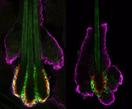
Stem cells (in green) of the hair follicle (outlined in magenta) reside in a specialized niche, called the bulge (outlined in red). They adhere to each other to maintain up to four bulges and four hairs (image on left, showing three bulges and hairs). Researchers have identified the protein FOXC1 as a regulator which controls how quickly the hairs regenerate and helps maintain multiple bulges and hairs. In the absence of FOXC1, the stem cells adhere poorly and can maintain only one hair, as in the image on the right. This can result in loss of the hair as the stem cells are depleted. This study may give helpful insights into treating hair loss from disease or aging. The image is courtesy of Kenneth Lay, Howard Hughes Medical Institute, Laboratory of Mammalian Cell Biology and Development, The Rockefeller University.
Updated Resource: Impact of NIH Research Website
The Impact of NIH Research website highlights research funded by the NIH that has gone on to make a difference in the world. NIAMS-funded research in lupus, rheumatoid arthritis, autoinflammatory disease and back pain is highlighted.
National Health Observances and Related NIAMS Resources
The NIAMS National Multicultural Outreach Initiative webpage highlights upcoming national health observances and related NIAMS resources. The NIAMS is featuring two health observances in June:
NIH News in Health
Read practical health information in NIH News in Health, which is reviewed by the NIH’s medical experts and is based on research conducted either by the NIH’s own scientists or by its grantees at universities and medical schools around the country.
Sidestep Sports Injuries
Playing sports can be a fun way to start moving. But a downside of getting in the game can be injuries. Sports-related injuries can range from scrapes and bruises to serious brain and spinal cord injuries. The most common for kids are sprains and strains, repetitive-motion injuries, and heat-related illnesses. Learn more about children and sports injuries at Ana’s story and La historia de Ana, a bilingual fotonovela from the NIAMS.
MEETINGS
June NIAMS Advisory Council Meeting
The NIAMS Advisory Council Meeting will be held June 7, 2016, in Building 31, 6th Floor, C Wing, Conference Room 6, NIH Campus. A meeting agenda is available. The Council meeting will be available for live viewing via the NIH videocasting service as well.

Rehabilitation Research at NIH: Moving the Field Forward
May 25–26, 2016
NIH Campus, Natcher Conference Center (Building 45)
Cost: Free
View draft agenda
Registration is available here.
NIH Pain Consortium Symposium
May 31–June 1, 2016
NIH Campus, Natcher Conference Center (Building 45)
Cost: Free
View draft agenda.
Registration is available here.
NIH Wednesday Afternoon Lecture Series
The NIH’s Wednesday Afternoon Lecture Series offers weekly lectures every Wednesday at 3 p.m. in Masur Auditorium, Building 10, NIH Campus. Renowned scientists from around the globe present research on a variety of topics. The lectures are Continuing Medical Education-certified, open to the public and available live via webcast.
Upcoming Lectures:
June 1, 2016
Howard Y. Chang, Ph.D., Stanford University
“Genome Regulation by Long Noncoding RNAs”
NIH Science Lectures and Events Available via Internet
The NIH hosts a number of science seminars and events that are available online through real-time streaming video. An event can be watched at your convenience as an on-demand video or a downloadable podcast. Most events are available to all; a few are broadcast for the NIH or the U.S. Department of Health and Human Services and are marked as such. See additional details on events.
FUNDING ANNOUNCEMENTS
NIAMS ANNOUNCEMENTS
Ruth L. Kirschstein National Research Service Award (NRSA) Institutional Research Training Grant (Parent T32)
(PA-16-152)
Letter of Intent Receipt Date: Not applicable
Application Receipt Dates: Standard dates apply
NIH Research Project Grant (Parent R01)
(PA-16-160)
Letter of Intent Receipt Date: Not applicable
Application Receipt Dates: Standard dates apply
NIH Exploratory/Developmental Research Grant Program (Parent R21)
(PA-16-161)
Letter of Intent Receipt Date: Not applicable
Application Receipt Dates: Standard dates apply
Limited Competition: Rare Diseases Clinical Research Network (RDCRN) Project Supplements for Clinical Trials To Repurpose Drugs in Collaboration With E-Rare Awardees (Admin Supp)
(PA-16-183)
Letter of Intent Receipt Date: Not applicable
Application Receipt Date: July 18
Mechanisms, Models, Measurement, and Management in Pain Research (R21)
(PA-16-187)
Letter of Intent Receipt Date: Not applicable
Application Receipt Dates: Standard dates apply
Mechanisms, Models, Measurement, and Management in Pain Research (R01)
(PA-16-188)
Letter of Intent Receipt Date: Not applicable
Application Receipt Dates: Standard dates apply
Mentored Research Scientist Development Award (Parent K01)
(PA-16-190)
Letter of Intent Receipt Date: Not applicable
Application Receipt Dates: Standard dates apply, with the first due date on June 12, 2016
Mentored Clinical Scientist Research Career Development Award (Parent K08)
(PA-16-191)
Letter of Intent Receipt Date: Not applicable
Application Receipt Dates: Standard dates apply, with the first due date on June 12, 2016
NIH Pathway to Independence Award (Parent K99/R00)
(PA-16-193)
Letter of Intent Receipt Date: Not applicable
Application Receipt Dates: Standard dates apply, with the first due date on June 12, 2016
Mentored Patient-Oriented Research Career Development Award (Parent K23)
(PA-16-198)
Letter of Intent Receipt Date: Not applicable
Application Receipt Dates: Standard dates apply
NIH COMMON FUND INITIATIVE ANNOUNCEMENTS
NIH Director’s New Innovator Award Program (DP2)
(RFA-RM-16-004)
Letter of Intent Receipt Date: Not applicable
Application Receipt Date: September 9, 2016
NIH Pioneer Award Program (DP1)
(RFA-RM-16-005)
Letter of Intent Receipt Date: Not applicable
Application Receipt Date: September 2, 2016
NIH Director’s Transformative Research Awards (R01)
(RFA-RM-16-007)
Letter of Intent Receipt Date: September 7, 2016
Application Receipt Date: October 7, 2016
Notice of Correction of Letter of Intent for RFA-RM-16-007 NIH Directors Transformative Research Awards (R01)
(NOT-RM-16-012)
Discovery of the Genetic Basis of Childhood Cancers and of Structural Birth Defects: Gabriella Miller Kids First Pediatric Research Program (X01)
(PAR-16-150)
Letter of Intent Receipt Date: May 17, 2016
Application Receipt Date: June 17, 2016
Notice of Intent To Publish a Funding Opportunity Announcement for the “Stimulating Peripheral Activity To Relieve Conditions (SPARC): Data Coordination, Mapping and Modeling Center (U54)”
(NOT-RM-16-009)
Notice of Date Change for the Molecular Transducers of Physical Activity Consortium (MoTrPAC) Steering Committee Meeting
(NOT-RM-16-010)
Notice of Correction of Expiration Date for RFA-RM-16-005 “NIH Directors Pioneer Award Program (DP1)”
(NOT-RM-16-011)
OTHER FUNDING ANNOUNCEMENTS
Revision of the NIH Guidelines for Research Involving Recombinant or Synthetic Nucleic Acid Molecules (NIH Guidelines) To Streamline Review Process for Human Gene Transfer Protocols
(NOT-OD-16-076)
Notice of Participation of the Office of Research Infrastructure Programs in PAR-16-106 “Rapid Assessment of Zika Virus (ZIKV) Complications (R21)”
(NOT-OD-16-077)
Notice of Participation of the Office of Disease Prevention in PAR-15-346 “Time-Sensitive Obesity Policy and Program Evaluation (R01)”
(NOT-OD-16-078)
Reporting Instructions for Publications Supported by Shared Resources in Research Performance Progress Reports (RPPR) and Renewal Applications
(NOT-OD-16-079)
Clarifications and Consolidated Biosketch Instructions and Format Pages Available for Applications With Due Dates On or After May 25, 2016
(NOT-OD-16-080)
Reminder: NIH and AHRQ Grant Application Changes for Due Dates On or After May 25, 2016
(NOT-OD-16-081)
Restructured and Streamlined Application Guides and Supplemental Instructions Available for Applications Due Dates On or After May 25, 2016
(NOT-OD-16-084)
Notice of Change of Second Level Review for Precision Medicine Initiative Cohort Program Healthcare Provider Organization Enrollment Centers (UG3/UH3) and Precision Medicine Initiative Cohort Program Participant Technologies Center (U24)
(NOT-PM-16-005)


